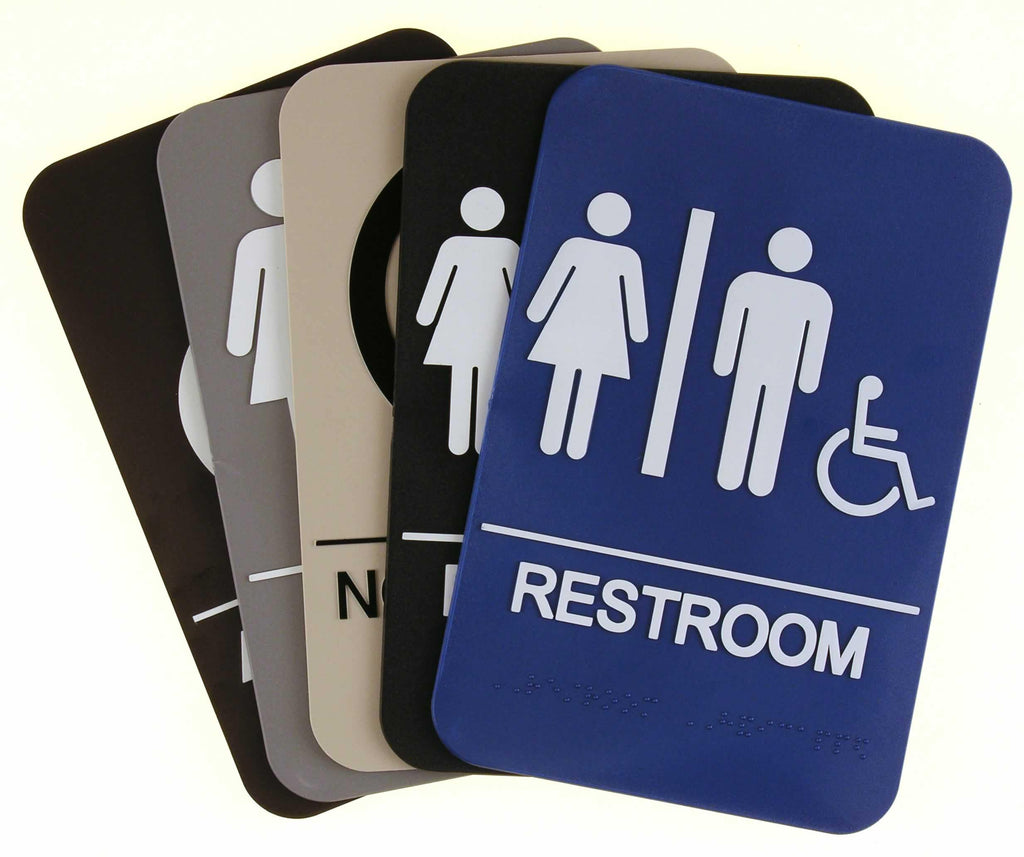Understanding the Laws Behind ADA Signs
Understanding the Laws Behind ADA Signs
Blog Article
Discovering the Trick Attributes of ADA Indications for Boosted Accessibility
In the realm of availability, ADA signs function as quiet yet effective allies, making sure that spaces are accessible and inclusive for people with impairments. By integrating Braille and responsive components, these indicators break obstacles for the aesthetically damaged, while high-contrast color design and understandable typefaces accommodate varied visual needs. Their tactical placement is not approximate yet rather a calculated effort to promote smooth navigating. Yet, past these features lies a deeper story regarding the advancement of inclusivity and the ongoing commitment to developing equitable rooms. What extra could these indications signify in our quest of global availability?
Importance of ADA Compliance
Ensuring compliance with the Americans with Disabilities Act (ADA) is vital for promoting inclusivity and equal access in public rooms and work environments. The ADA, established in 1990, mandates that all public facilities, companies, and transportation services fit people with impairments, ensuring they enjoy the same legal rights and opportunities as others. Conformity with ADA criteria not only meets lawful commitments however also improves an organization's credibility by showing its commitment to variety and inclusivity.
One of the vital elements of ADA conformity is the application of easily accessible signs. ADA indications are made to guarantee that people with impairments can conveniently navigate through areas and structures.
Additionally, adhering to ADA guidelines can minimize the danger of possible penalties and legal repercussions. Organizations that fall short to follow ADA standards might encounter penalties or lawsuits, which can be both financially burdensome and destructive to their public photo. Thus, ADA conformity is integral to cultivating an equitable environment for everybody.
Braille and Tactile Aspects
The unification of Braille and tactile elements into ADA signs embodies the principles of ease of access and inclusivity. It is generally put below the matching message on signs to guarantee that people can access the details without visual aid.
Tactile components expand past Braille and consist of elevated signs and characters. These elements are developed to be noticeable by touch, permitting people to recognize room numbers, bathrooms, departures, and other critical locations. The ADA sets details standards pertaining to the dimension, spacing, and placement of these responsive components to optimize readability and ensure consistency across various atmospheres.

High-Contrast Color Design
High-contrast color systems play a crucial function in improving the presence and readability of ADA signs for people with aesthetic impairments. These systems are essential as they optimize the distinction in light reflectance in between message and history, guaranteeing that indicators are conveniently discernible, also from a range. The Americans with Disabilities Act (ADA) mandates making use of details color contrasts to accommodate those with minimal vision, making it a crucial facet of conformity.
The efficiency of high-contrast colors exists in their capability to attract attention in various lights problems, including poorly lit settings and areas with glare. Normally, dark text on a light history or light text on a dark background is used to accomplish optimum comparison. Black message on a yellow or white background gives a stark aesthetic distinction that aids in quick recognition and comprehension.

Legible Fonts and Text Size
When taking into consideration the style of ADA signage, the selection of clear fonts and proper text size can not look at these guys be overemphasized. The Americans with Disabilities Act (ADA) mandates that typefaces have to be not italic and sans-serif, oblique, manuscript, highly attractive, or of uncommon type.
According to ADA guidelines, the minimal text height ought to be 5/8 inch, and it needs to increase proportionally with watching range. Uniformity in message size contributes to a cohesive aesthetic experience, helping people in browsing environments effectively.
In addition, spacing in between lines and letters is important to legibility. Sufficient spacing protects against characters from showing up crowded, improving readability. By sticking to these criteria, designers can significantly boost accessibility, ensuring that signs serves its desired function for all people, regardless of their visual capabilities.
Reliable Positioning Approaches
Strategic placement of ADA signs is vital for taking full advantage of access and making sure compliance with legal criteria. ADA guidelines state that indications ought to see here be mounted at an elevation between 48 to 60 inches from the ground to ensure they are within the line of view for both standing and seated individuals.
In addition, signs need to be placed nearby to the latch side of doors to enable simple recognition before entrance. Uniformity in indication placement throughout a center enhances predictability, decreasing complication and boosting overall user experience.

Verdict
ADA indications play an important role in advertising accessibility by integrating features that address the demands of individuals with specials needs. These aspects collectively cultivate a comprehensive setting, emphasizing the significance of ADA conformity in ensuring equivalent accessibility for all.
In the realm of accessibility, ADA signs offer as silent yet effective allies, guaranteeing that spaces are comprehensive and accessible for people with handicaps. The ADA, enacted in 1990, mandates that all public centers, companies, and transportation solutions accommodate individuals with specials needs, guaranteeing they take pleasure in the very same civil liberties and chances as others. ADA Signs. ADA indications are developed to ensure that people with disabilities can conveniently navigate through spaces and buildings. ADA standards stipulate that indicators need to be mounted at an elevation in between 48 to 60 inches from the ground to guarantee they are within the line of sight for both standing and seated people.ADA signs play an important function in advertising accessibility by incorporating attributes that deal with the requirements of individuals with disabilities
Report this page